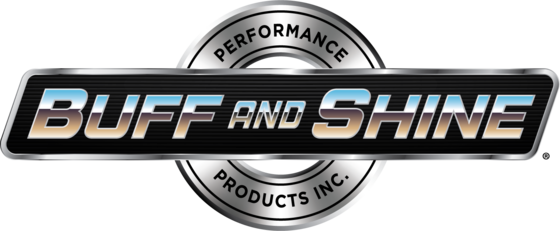Rotary Polisher
High-Speed/Rotary Polisher
The backing plate of a simple rotary polisher (often called a “high-speed polisher”) does just what the name implies—it simply spins round and round about a center point. If the machine is held in the same place for more than a few seconds, the spinning motion of the buffer pad against the paint surface of the vehicle causes friction and heat build-up. It is this heat and friction that gives the simple rotary machine its greatest advantages and at the same time its greatest potential for harmful results.
Rotary polishers have traditionally been called “high-speed” because in the old days (and, in some cases, even now), these machines were run at upwards of 3000 rpm. In contrast, most modern users of this technology run the machines at much lower speeds, perhaps between 600-1000 rpm. There is a great variance in preferences and opinions about speed, but the majority of detailing professionals using rotary polishers generally follow the rule “slower is better.”
We can utilize the friction created by the simple rotary machine at lower speeds to polish out imperfections and sub-surface damage in the paint. We can utilize the heat created by the same machine set at higher speeds to burnish the paint surface. “Burnishing” refers to the act of heating up the paint surface so that it can be “worked” into a high gloss.
At the same time that the simple rotary polisher good impact on the paint, it can, if used incorrectly, have bad impact on the paint. The most common problems include “burning” the paint, swirl marks, and excessive paint removal. Burning refers actually to the act of heating the paint so hot that it melts. The typical appearance of this is a “folding over” of the paint onto itself in small areas, kind of making the paint look like it was wiped while still wet.
With incorrect use of a rotary polisher, paint can also be removed, most commonly from the edges and high contour points of a painted panel. This usually happens when the pad of the buffer is allowed to work over the contour or edge for too long or while heavy pressure is being applied to the machine. With the friction generated by the continuous spinning motion of the pad, it doesn’t take long for the paint to wear away.
Since the motion of a high-speed polisher is simple rotary, a number of things can go wrong during use, yielding swirl marks, which are concentric arcs or circles of micro-scratches left by the pad of a simple rotary polisher. Perhaps the pad or chemical being used is too aggressive, or even just the motion that the technician uses while moving the machine across the surface of the vehicle. The way to reduce swirl marks is to learn how to use the machine correctly and to learn how to combine pads and chemicals to yield a shiny paint surface with a minimum of swirls left behind.
The simple rotary polisher, when used correctly, is great for heavy paint defect removal in a relatively fast manner. Some technicians like to begin heavy paint correction projects with a simple rotary polisher and then continue fine polishing with random-orbit or dual-action polishers.
6" Flex Edge Grip Backing Plate
It's a new buffing world out there, even for the classic simple rotary (high-speed) machine. Some technicians have transitioned to the use of thinner buffing pads, like our Micro Fiber and Low-Pro Pads. Buff and Shine's new Thick Flexible Backing Plate is an ideal match for these and other pads. Available in three sizes for all your buffing needs. Constructed with an 1" thick polyurethane layer, the Thick Flexible Backing Plate can offer dramatically increased flexibility that can make up for the loss of flexibility that is sometimes experienced with thin buffing pads. This allows the technician who loves the performance of thin pads to also enjoy the capability of working contours in the vehicle surface that are otherwise more difficult to reach with traditional backing plates.
You will find that the Thick Flexible Backing Plate allows superior control and distribution of pressure over body style lines. It provides virtually 100% surface contact across contours while reducing the potential for damage to protruding body style edges. The highly-beveled pad edge allows for "working into" the deepest body line recesses.
The 7" diameter size is great for use with a traditional rotary buffer on larger open surface areas or vehicle painted panels like hoods and trunk lids. The 5" diameter size is great for smaller panels and those with heavy contouring. The 3" size is perfect for buffing tight areas with your favorite smaller rotary polisher (but it also works even with traditional-sized rotary buffers!). Use the 3" size for working on headlight lens restoration.
As with all Buff and Shine backing plates, the Thick Flexible Backing Plate is constructed with the highest quality materials and designed to provide countless hours of use, even with the abuse that a rotary polisher can dish out!
6" Flex Edge Grip Backing Plate
The flex edges allow the backing plate to be more forgiving while buffing and they fit our 6" foam pad line along with our Center Ring wool and foam pads.
- Diameter: 6"
- Thread: 14mm
6" Flex Edge Grip Backing Plate
The flex edges allow the backing plate to be more forgiving while buffing and they fit our 6" foam pad line along with our Center Ring wool and foam pads.
- Diameter: 6"
- Thread: 5/8" x 11







